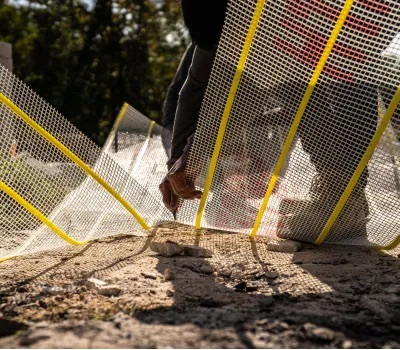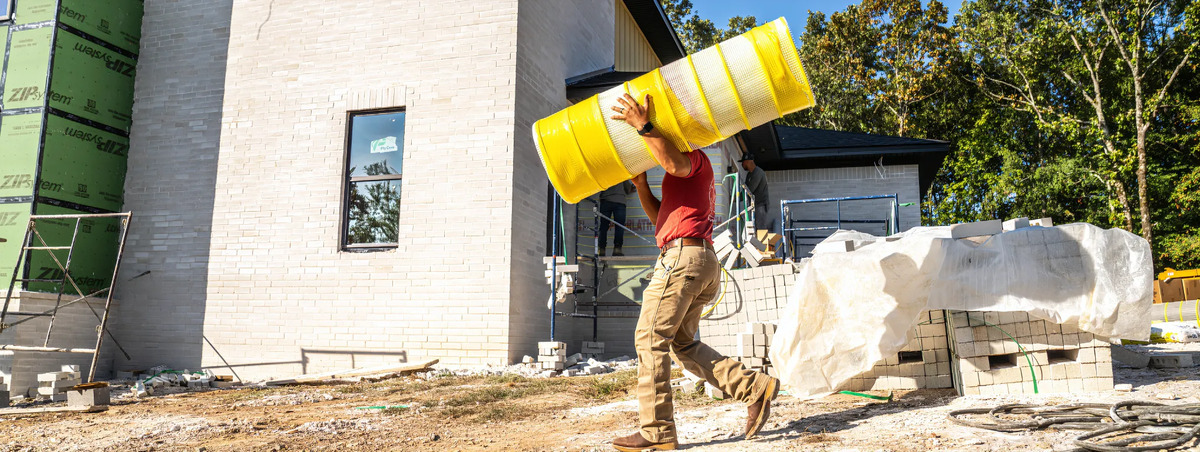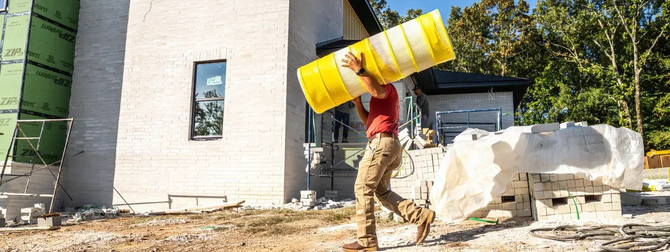Posted by Spycor Building on Mar 19th 2025
When it comes to stucco, stone veneer, and plaster applications, choosing the right lath system is crucial for durability, performance, and ease of installation. SpiderLath, a fiberglass stucco lath, has become a game-changer in the construction industry, offering numerous advantages over traditional metal lath systems. Whether you’re a contractor, builder, or DIY enthusiast, understanding how fiberglass lath can improve your masonry projects will help you make informed decisions.

In this comprehensive guide, we’ll explore everything you need to know about SpiderLath, including its benefits, applications, and a step-by-step fiberglass lath installation guide for stucco applications. If you're looking for a lightweight rust-free lath for stone veneer projects, keep reading to learn why SpiderLath is the best choice for your construction needs.
Why Choose Fiberglass Lath Over Metal Lath?
1. Rust-Free and Long-Lasting
Traditional metal lath is prone to rust, especially in high-humidity or coastal environments. Fiberglass lath is completely rust-free, ensuring that your stucco, stone veneer, or plaster project remains intact for years without the risk of corrosion.
2. Lightweight and Easy to Handle
If you’ve ever worked with metal lath, you know how heavy and cumbersome it can be. SpiderLath, on the other hand, is a lightweight rust-free lath for stone veneer projects, making it easier to transport, cut, and install with minimal effort.
3. Strong and Code-Approved
SpiderLath meets stringent building codes for stucco and plaster applications, making it a code-approved lath system for plaster installations. It provides exceptional strength while eliminating the need for cumbersome fasteners.
4. Safer to Use
Metal lath can cause injuries due to its sharp edges. Fiberglass lath offers a safer alternative with a smooth surface, reducing the risk of cuts and abrasions during installation.
5. Compatible with a Wide Range of Applications
From stucco and stone veneer to decorative concrete finishes, SpiderLath is a durable lath solution for decorative concrete finishes that enhances the longevity and strength of various masonry projects.

Fiberglass Lath Installation Guide for Stucco Applications
Installing SpiderLath is straightforward and requires minimal tools. Follow these steps to ensure a successful application:
Step 1: Gather Your Materials
-
SpiderLath fiberglass lath
-
Stucco mix or mortar
-
Screws or fasteners (if required by local codes)
-
Staple gun or trowel
-
Utility knife for cutting
Step 2: Prepare the Surface Ensure that the surface where you’ll be applying fiberglass stucco lath is clean and free from debris. If you’re working on a framed structure, apply a weather-resistant barrier before installing the lath.
Step 3: Measure and Cut the Lath Using a utility knife, cut the SpiderLath to the required dimensions. Unlike metal lath, which requires specialized cutting tools, fiberglass lath can be trimmed easily and efficiently.
Step 4: Install the Lath Place the fiberglass stucco lath onto the surface and secure it using appropriate fasteners. Make sure the lath is taut and free from wrinkles to prevent any inconsistencies in the stucco application.
Step 5: Apply Stucco or Mortar Once the lath is securely in place, apply the first coat of stucco or mortar, ensuring it fully embeds into the mesh. Allow it to dry according to manufacturer instructions before applying additional layers.
Step 6: Finish the Surface After the final coat has cured, you can texture, paint, or seal the surface as desired.

Applications of SpiderLath
-
Stucco Walls
Ideal for residential and commercial stucco projects, SpiderLath enhances adhesion and durability. Its lightweight design makes it easier to handle and install, reducing labor time and costs. Unlike traditional metal lath, it does not corrode, ensuring long-term performance even in humid or coastal environments. -
Stone Veneer Installations
For a secure and long-lasting stone veneer application, fiberglass lath provides the necessary reinforcement without the risk of rust. SpiderLath supports even heavy stone veneer applications while maintaining flexibility for curved surfaces and intricate designs. This makes it an excellent choice for both exterior facades and indoor accent walls. -
Decorative Concrete Finishes
Architectural concrete elements benefit from durable lath solutions for decorative concrete finishes, ensuring smooth application and longevity. SpiderLath provides a stable foundation that minimizes cracking and enhances the structural integrity of decorative overlays, stamped concrete, and textured finishes. -
Plaster Ceilings and Walls
For both interior and exterior plaster applications, SpiderLath offers superior strength and workability. Its lightweight yet robust construction allows for easy cutting and shaping, making it ideal for detailed plaster designs, ornamental ceilings, and restoration projects. Additionally, its non-metal composition eliminates concerns about rust stains or material degradation over time.
CLICK HERE to check out the Best SpiderLath options for your Next Building Projects!


